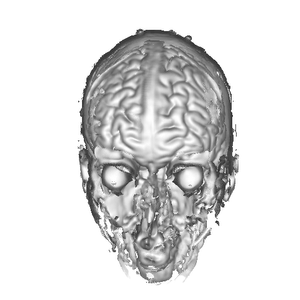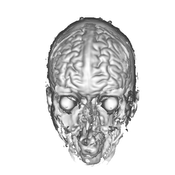Information
- Publication Type: Technical Report
- Workgroup(s)/Project(s):
- Date: February 2007
- Number: TR-186-2-07-03
- Keywords: transfer function, volume visualization, feature peeling, ray analysis
Abstract
We present a novel rendering algorithm that analyses the ray profile along the line of sight during rendering and cuts it into layers, according to the peaks and valleys found, which we call transition points. The sensitivity of these transition points is calibrated via two thresholds. The slope threshold influences the magnitude of a peak following a valley, while the peeling threshold measures the depth of the transition point relative to the neighboring rays. This technique separates the dataset into a number of feature layers. The user can scroll through the layers inspecting various features from the current view position. While our technique has been inspired by opacity peeling approach [14], we demonstrate that we can reveal detectable features even in the third and forth layers for both, CT and MRI datasets.
Additional Files and Images
Additional images and videos
Additional files
Weblinks
No further information available.
BibTeX
@techreport{TR-186-2-07-03,
title = "Feature Peeling",
author = "Muhammad Muddassir Malik and Torsten M\"{o}ller and Eduard
Gr\"{o}ller",
year = "2007",
abstract = "We present a novel rendering algorithm that analyses the ray
profile along the line of sight during rendering and cuts it
into layers, according to the peaks and valleys found, which
we call transition points. The sensitivity of these
transition points is calibrated via two thresholds. The
slope threshold influences the magnitude of a peak following
a valley, while the peeling threshold measures the depth of
the transition point relative to the neighboring rays. This
technique separates the dataset into a number of feature
layers. The user can scroll through the layers inspecting
various features from the current view position. While our
technique has been inspired by opacity peeling approach
[14], we demonstrate that we can reveal detectable features
even in the third and forth layers for both, CT and MRI
datasets.",
month = feb,
number = "TR-186-2-07-03",
address = "Favoritenstrasse 9-11/E193-02, A-1040 Vienna, Austria",
institution = "Institute of Computer Graphics and Algorithms, Vienna
University of Technology ",
note = "human contact: technical-report@cg.tuwien.ac.at",
keywords = "transfer function, volume visualization, feature peeling,
ray analysis",
URL = "https://www.cg.tuwien.ac.at/research/publications/2007/TR-186-2-07-03/",
}



